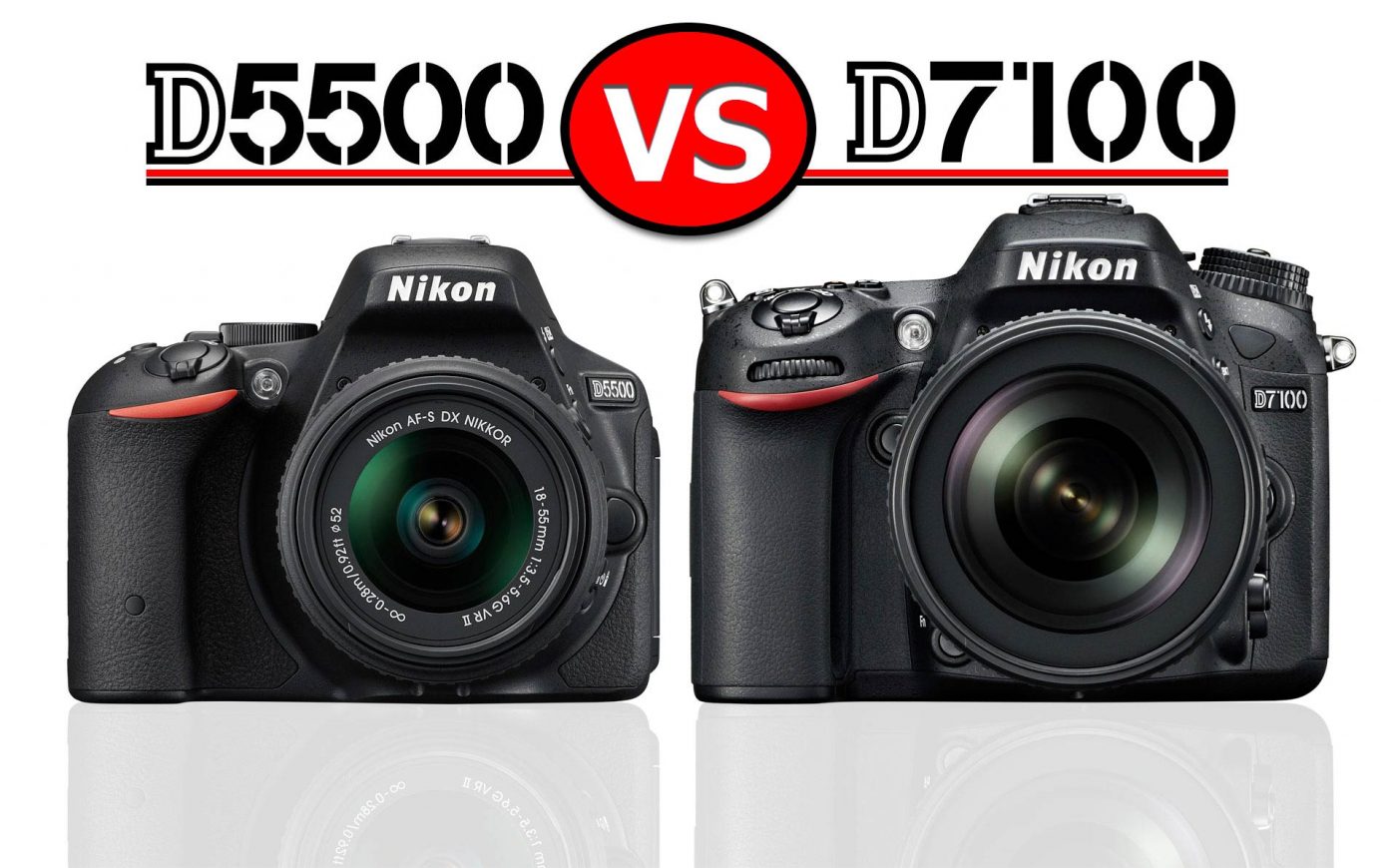Like its predecessor, the new Nikon D5500 is the most advanced entry/mid-level SLR available, making the choice to spend a little more money on the Nikon D7100 even harder. Below, I’ll briefly explain what has been added to (and what has been taken away from) the D5300 to derive the D5500, but I’ll primarily focus on the differences that remain between the D5500 and the D7100. If you’re trying to decide which camera to buy, my general advice is always this: buy the least expensive camera that will meet your needs, and buy the best lenses that you can afford. Most photographers will be very happy with the D5500, but some advanced shooters will require the D7100; this article should help you decide whether you fall into the latter camp.
[UPDATE: With the release of the Nikon D7200, I’ve updated this article with the new camera information. You can read that article here: Nikon D7200 vs D5500.]New In the D5500
If you’re deciding between D5500 and older D5300, here’s the difference:
- a touch-sensitive screen has been added to the D5500
- built-in GPS have been removed in the D5500
- the top of the ISO scale has been increased by a stop to 25600, though it may be more accurate to say that the “expanded” ISO of 25600 has been incorporated as “native”
- its a millimeter shorter and narrower, 5mm thinner, and about 60 grams lighter than the D5300
That’s it! The D5500 and D5300 are virtually identical, otherwise, so as the price drops on the D5300, many photographers who don’t care about having a touch-screen or who want built-in GPS will be able to pick it up at a great price.
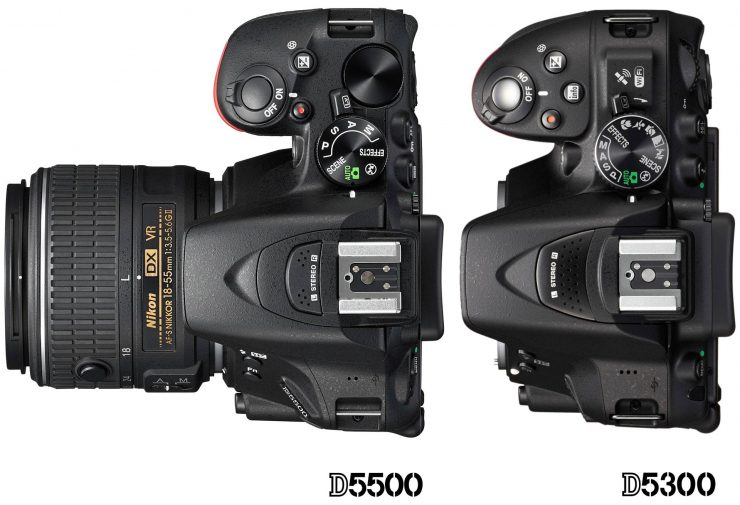
Nikon D5500 vs D7100: What’s the Difference?
To begin with, we can take a look at the most significant specs for the D5300, the new D5500, and the D7100.
| Nikon D5300 | Nikon D5500 | Nikon D7100 | |
|---|---|---|---|
| Price (body) | $596 | $746 | $796 |
| Price (with 18-140mm kit lens) | $896 | $1046 | $1096 |
| Body Material | Sereebo, (carbon fiber reenforced plastic) body-chassis | Sereebo, (carbon fiber reenforced plastic) body-chassis | Partial Magnesium Alloy Frame, Plastic |
| Dust/Weather Sealed Body | None | None | Moderate |
| Sensor Resolution | 24.1 Megapixels (Toshiba) | 24.1 Megapixels (Toshiba) | 24.1 Megapixels (Toshiba) |
| Anti-Aliasing Filter (Reduces sharpness, prevents moire) | NO | NO | NO |
| ISO Range | 100-12800 +25600 | 100-25600 | 100-6400 +12800 +25600 |
| Total AF Points | 39 | 39 | 51 |
| Cross-Type AF Points | 9 | 9 | 15 |
| AF Motor In Body (For Using Older AF Lenses) | NO | NO | YES |
| AF Light Level Range | -1 to +19 EV | -1 to +19 EV | -2 to +19 EV |
| Autofocus Fine Tuning Adjustments | NO | NO | YES |
| Shutter Speed Range | 1/4000th - 30 sec. +bulb | 1/4000th - 30 sec. +bulb | 1/8000th - 30 sec. +bulb |
| Expected Shutter Life | 100,000 Shots | 100,000 Shots | 150,000 Shots |
| Max Frame Rate | 5 fps | 5 fps | 6 fps (7 shots in 1.3x crop mode) |
| Max RAW Burst (buffer size) | 6 shots, compressed 14-bit | 6 shots, compressed 14-bit | 7 shots lossless 12-bit 6 shots lossless 14-bit |
| Max JPG Burst (fine, Large) | ~100 | ~100 | 33 |
| Flash Sync Speed | 1/200th sec. | 1/200th sec. | 1/250th sec. (1/320th* sec, or slower,) |
| Wireless Flash (Built-in Commander) | NO | NO | YES |
| Auto FP Flash Mode (High Speed Sync) | NO | NO | YES |
| Media Slots | 1 SD / SDHC / SDXC | 1 SD / SDHC / SDXC | 2 SD / SDHC / SDXC |
| LCD Size | 3.2" 1,036,800 pixels | 3.2" 1,036,800 pixels | 3.2" 1,228,800 pixels |
| LCD Articulated | Yes | Yes | No |
| LCD Touchscreen | No | YES | No |
| Built-in GPS | Yes | No | No |
| Built-in WiFi | Yes | Yes | No |
| Body Weight | 480g (no battery) 530g (with battery) | 420g (no battery) 470 (with battery) | 675 (no battery) |
| Body Size | 125 x 98 x 76 mm | 124 x 97 x 70 mm | 136 x 107 x 76 mm |
| Battery Life | 600 shots CIPA Standards | 820 shots CIPA Standards | 950 shots CIPA Standards |
| Viewfinder Coverage | 95% Frame .82x Magnification | 95% Frame .82x Magnification | 100% Frame .94x Magnification |
| Video Codec | MPEG-4 / H.264 .mov | MPEG-4 / H.264 .mov | MPEG-4 / H.264 .mov |
| Video Resolutions | 1920 x 1080 (60p, 60i, 50i, 30, 25, 24 fps) 1280 x 720 (60, 50 fps) 640 x 424 (30, 25 fps) | 1920 x 1080 (60p, 60i, 50i, 30, 25, 24 fps) 1280 x 720 (60, 50 fps) | 1920 x 1080 (60i*, 50i*, 30, 25, 24 fps) 1280 x 720 (60, 50 fps) 640 x 424 (30, 25 fps) *only in 1.3x crop mode |
| Video Length Limit | 29 min 59 sec. | 29 min 59 sec. | 29 min 59 sec. |
| Headphone Jack | No | No | Yes |
| Internal Mic | Stereo | Stereo | Stereo |
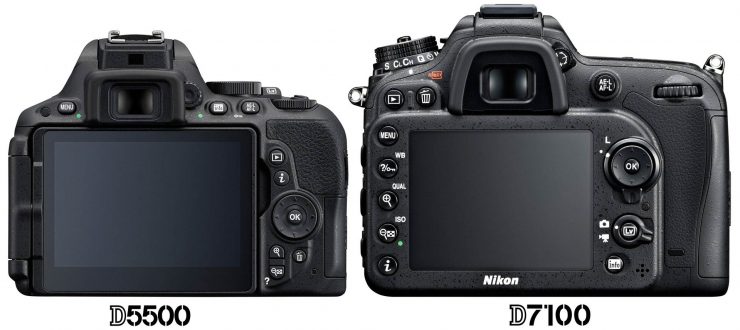
Build Quality
Perhaps the most obvious difference between the D7100 and the D5500 is in their construction. The D5500 body is significantly smaller and lighter, built of carbon-fiber reenforced plastics (Sereebo), while the D7100 is heavier and built for durability, with a metal (magnesium alloy) back and top, and importantly, it is weather sealed. Since the D5500 also uses a smaller battery, the carry-around weight of the D7100 is about 40% more1 Actually 38.6% than the D5500.
Whether this is an advantage or disadvantage depends on your photographic needs; some photographers (especially those with larger hands) prefer a larger camera with some ‘heft’ to it, while others prefer something more lightweight and easy to carry around, especially travelers and hikers. Needless to say, those who work in harsh conditions will also prefer the D7100’s weather sealing and heavier-duty construction, as a matter of practicality.
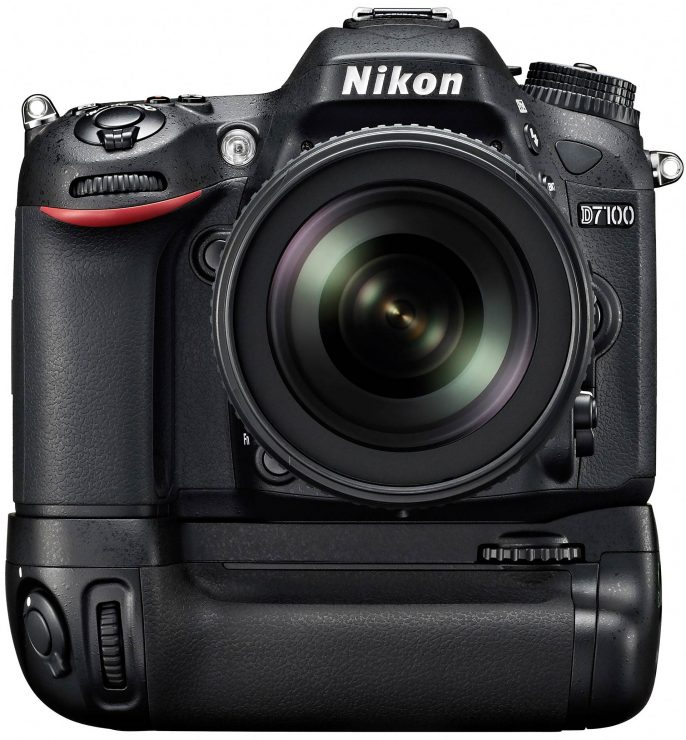
The Sensors : Exactly the Same
The success of the D800e may have led directly to Nikon’s decision to produce an APS-C camera without an optical low-pass/anti-aliasing (OLP/AA) filter, but whatever led to the fact, the D7100’s sensor is naked. Before the D800e, all of the major SLRs produced their sensors with an AA filter: essentially an extra layer in front of the sensor that blurs the image slightly, in order to reduce the jagged edges and moire 1 that have traditionally been associated with digital capture. With modern improvements in image processing software, though, Nikon was confident that the moire and jaggies could be avoided without the AA filter, so they opted to remove it and allow the cameras to capture finer image detail.
Now, with the success of the D7100, Nikon has also decided to remove the AA filter from the D5300 and D5500’s sensors. For all practical purposes, there is no difference between the sensors the D7100 and D5500, so there should be no difference in image quality if you shoot RAW. Though this lack of AA filter does provide the potential to for the camera to produce sharper images, don’t expect too much.
Comparisons of images produced by the D800 (AA Filter) and D800e (no AA Filter) have shown that the principle works; there are subtle improvements in fine detail in the D800e’s images. However, we should not expect such significant improvements in the D7100’s images. The receptors on the 24 megapixel sensor of the D7100 are already much, much smaller than those of the D800e. In fact, the D7100 and D5500 fit about 56% more pixels into the same sensor area than the D800e.
Why does that matter? Even with the much larger receptors of the D800, lens resolution has become a serious bottle-neck for image quality. The dramatically higher pixel density of Nikon’s 24 megapixel sensors will tax lens resolution even more, meaning that the D7100 and D5500’s images won’t get much sharper unless lenses get sharper first.
Auto Focus Systems
Unlike most entry and mid-level SLRs, the Nikon D5500 has a very sophisticated autofocus system. While cameras like the Canon T5i and 70D have 9 and 19 autofocus points, respectively, the D5500 has 39, though only the central nine of them are cross-type2If you’re not sure what cross-type points are, or why they’re important, check out our short video on the subject, here.. This autofocus system, which also incorporates color information, has been adopted from the Nikon D7000.
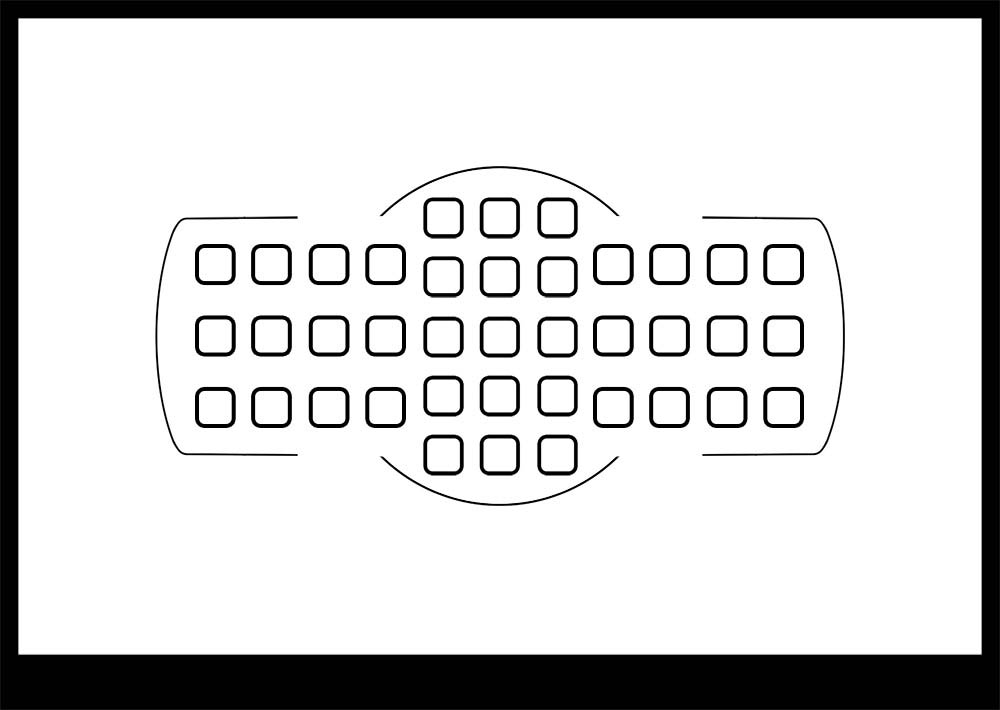
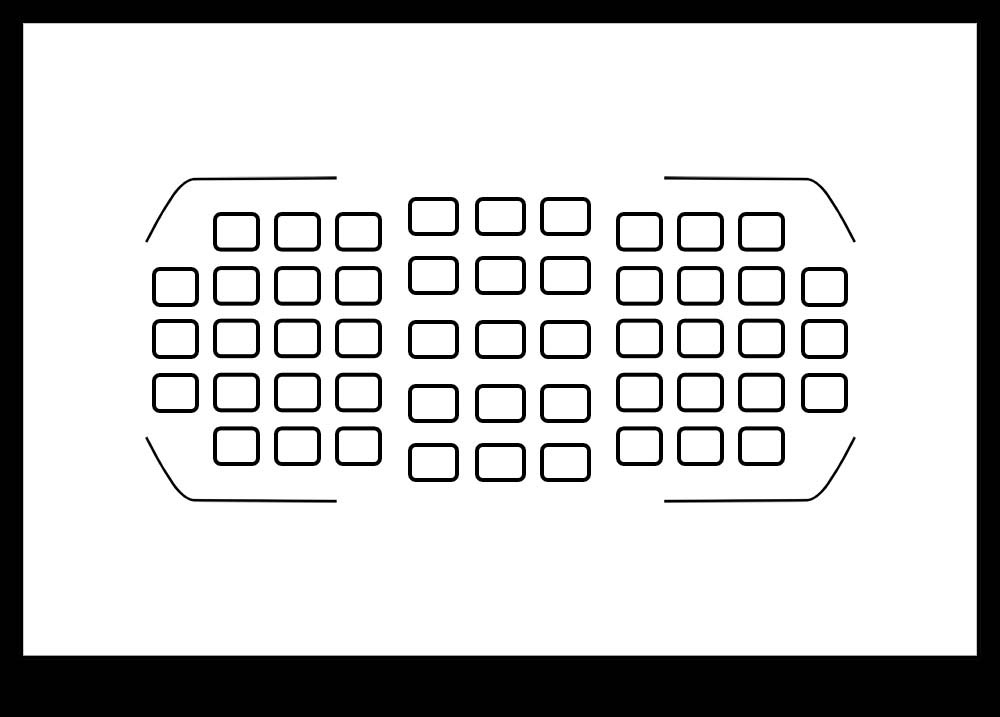
The D7100, however, shares the same AF system with the flagship Nikon D4 and the D800: 51 AF points, including 15 cross-type… the best system available in a Nikon body.
For all but the most dedicated action photographers, the system in the D5500 will be more than sufficient, even if you’re buying a camera primarily for shooting sports. If your paycheck, however, is going to depend on your focusing system, the extra several hundred dollars will be well spent on the D7100.
Speed
When it comes to speed, the differences between the D5500 and D7100 are more modest that you might expect. The D7100 does have a top shutter speed that is one full f-stop faster than the D5500’s (ie, 1/8000th vs 1/4000th). When it comes to shooting bursts of photos, though, the D7100 only provides an additional frame per second over the D5500’s 5 fps (unless you’re shooting in 1.3x crop mode, in which case it will give up an additional frame per second).
More importantly, though, the under-sized buffer in the D7100 does not allow longer bursts than the D5500; in fact, the D5500 comes out dead even. The D7100 and D5500 can both only shoot 6 14-bit RAW shots before the buffer is full (the D5200 could manage 8). Compare this to the 15 RAW shots allowed by a Canon 60D or 25 in a 7D, and it will be clear that neither Nikon is probably ideal for photographers who rely on the machine-gun method of action photography.
That said, shooting JPG changes things dramatically. The D7100 can shoot bursts of at least 33 frames (at 6 fps) while the D5500 may be able to shoot 100 or more frames (at 5fps).
The D5500’s Downfall
Flash. With the popularity of “Strobist” techniques over the past several years, flash photography has become increasingly important to amateur and semi-pro photographers, and this is where the D5500 falls short: it lacks high-speed-sync3For a quick explanation of what high-speed-sync is, watch our video here. (Auto FP Flash, henceforth AFP) and external flash control with the built-in flash. External flash control may not be a big deal; many of us prefer to use radio-units instead… though the built-in IR system can be very useful with Nikon’s Creative Lighting System (CLS).
The lack of AFP, however, is a serious problem. Consider this situation: you’re shooting a portrait outdoors during the day, and you want to use a large aperture to blur the background… perhaps f/2 or f/1.4 . This will push your shutter speed beyond 1/1000ths of a second, much higher than the camera’s 1/200th sec. maximum sync speed. So, if you want to use a flash to soften the shadows or create a catch-light in the eyes of your subject, forget it: the flash will not sync. The same is true if you want to use flash for sports and a high shutter speed, and while you can purchase external command modules or radio transmitters for off-camera-flashes, there’s nothing you can buy to work around the lack of AFP. You’d need to buy the D7100 instead.
In some instances, a neutral density filter can be used to bring the shutter speed down within the range of the D5500’s sync speed. There are several problems with the method, though: the image through your viewfinder can become quite dark, making it hard to frame your shot and making it hard for your camera’s AF system to pull focus, you lose flash power, if you’re shooting with a telephoto lens, shutter speeds at the camera’s sync speed might not be safe for hand-holding, and they’ll always be too slow for sports or fast action (if you’re balancing flash and ambient light).
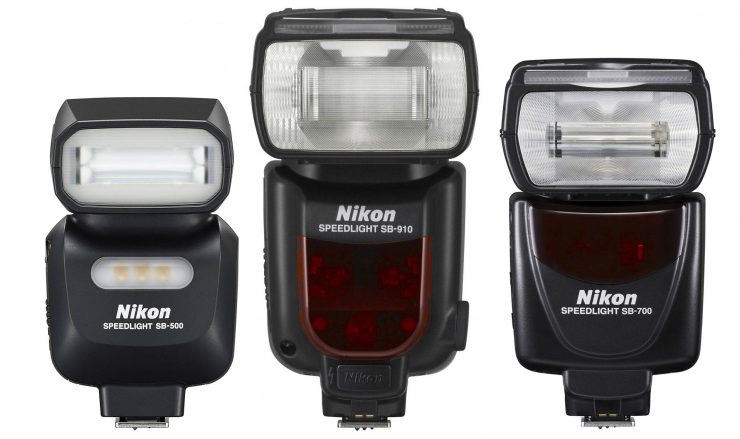
All the Little Things
There are a few other assorted differences that deserve mention here, but they’re mostly the same differences that we saw between the D5100 and D7000. First, the D5500 does not have an autofocus motor built into the camera body, so it will not be compatible with the full range of (old school) Nikon lenses, while the D7100 does posses the motor. And speaking of “focus”, the D7100 is capable of micro adjustments to correct for front or back-focus problems on lenses, while the D5500 is not.
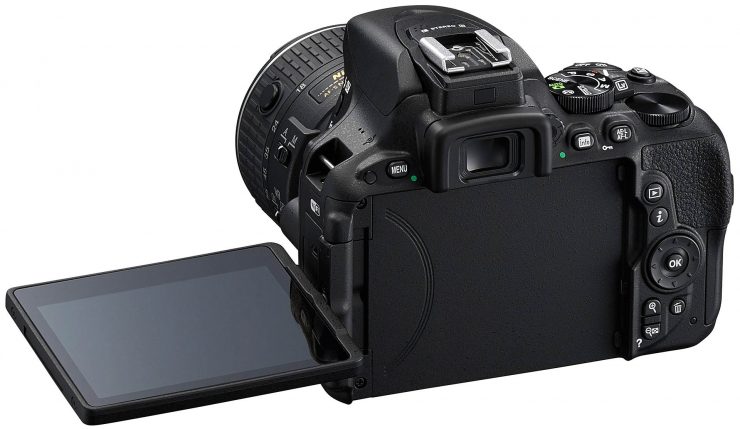
As should be obvious from the images above, the D5500 has an articulated LCD screen, which some people find helpful for ground-level shots and video but others find a breakage hazard or amateurish.
Finally, if you are interested in video, the D7100 has been given a headphone jack for monitoring audio while you shoot. The jack is absent in the D5500 (and D5300, D7000). It’s also worth noting that the D5500/5300 are capable of shooting video at 1920×1080 at 60p, while the D7100 currently only does so at 30 or 24p (although it can shoot 60i if you’re willing to use 1.3x crop mode).
Which to Buy?
The Nikon D5300 and D5500 are great cameras, and I’d recommend them for the vast majority of amateur photographers, with the exception of those who need superior flash capabilities. If you’re ready to buy now, please support this site by purchasing through one of the links below! Thanks!
To summarize, you should buy the D5300 if you:
- want a great, all-around camera
- shoot primarily with natural light or studio strobes
- have smaller hands, or need the lightest body while maintaining high performance
- need an articulated LCD screen for video or photos
- want to shoot video at 1080/60p
- want to save some money to buy the best lenses possible. At Amazon, the current price for the D5300 body is [amazon template=price&asin=B00FXYT12G]
Buy the D5500 ONLY IF you:
- really care about the weight of your camera. The D5500 weighs about 60g less than the D5300; that’s about the weight of a large chicken egg.
- think you’ll really enjoy using a touchscreen.
- find that the current prices are very similar. At Amazon, the current price for the D5500 body is [amazon template=price&asin=B00RUBJ7EW]
- have noticed that the D5500 kit with 18-140mm is more expensive than the D7100 with the same lens, currently!
Buy the D7100 if you:
- are hard on your equipment and need a more durable body
- use flash for action or fill and need high-speed sync
- use Nikon’s CLS and want to use the built-in command module
- shoot macro (or other focus critical work) and need to make micro adjustments to your lenses
- shoot a lot of video and want a simple headphone jack on your camera
- don’t need to worry about spending a little more. At Amazon, the current price for the D7100 body is [amazon template=price&asin=B00BI9X97I]
For the sake of simplicity I’ve tried to focus on only the differences that, in my experience, will actually be important. There are, of course, numerous differences between the two cameras, though, and some features may be more important to particular photographers. If you think that I’ve left out something important, please feel free to let me know.
Please Comment!
If you have additional questions or comments, please let me know, below. I’ll do what I can to answer questions and clear up any confusion.

